The 6 Best Tripods For Canon M50 2024 – Pick the right one for you!
A tripod is one of the most important pieces of camera gear you can buy. It allows you to take pictures and videos with a stable frame, which makes it easier to get a great shot every time. A good tripod will also last for years, so it’s a worthwhile investment.
Finding the right one can be tricky though; there are so many different models out there that it can be hard to know where to start.
In this post we’re going to look at six different options that are ideal for use with Canon M50, explaining each one in detail so you know what makes them stand out from the crowd!
Best Tripods For Canon M50 – Top 6 Picks
1. Manfrotto Befree Advanced Tripod (Aluminum)

Key Specs:
Leg sections: 4
Max Height: 59″
Min Height: 15.8″
Weight: 3.6 lb
Max payload: 19.8 lb
The good
+ Lightweight
+ Easy to set up
+ Great durability
The bad
– Max height can go up to 59″ only
Key takeaway
All in all, the Manfrotto Befree Advanced Twist Travel Tripod is a great option for photographers who need a travel tripod that is both reliable and easy to use. Its stable legs, impressive load capacity, and smooth ball head performance make it a solid choice for any photography adventure. Just be prepared to deal with a few minor quirks here and there.
This little baby is perfect for those on the go who still want to capture amazing shots without lugging around a huge tripod.
And trust me, as a light packer, I know a thing or two about not wanting to lug things around.
Let’s get to the good stuff, shall we? This tripod is compact, lightweight, and easy to use. The leg sections are adjustable, which is great for uneven terrain, and the twist-lock mechanism is easy to operate.
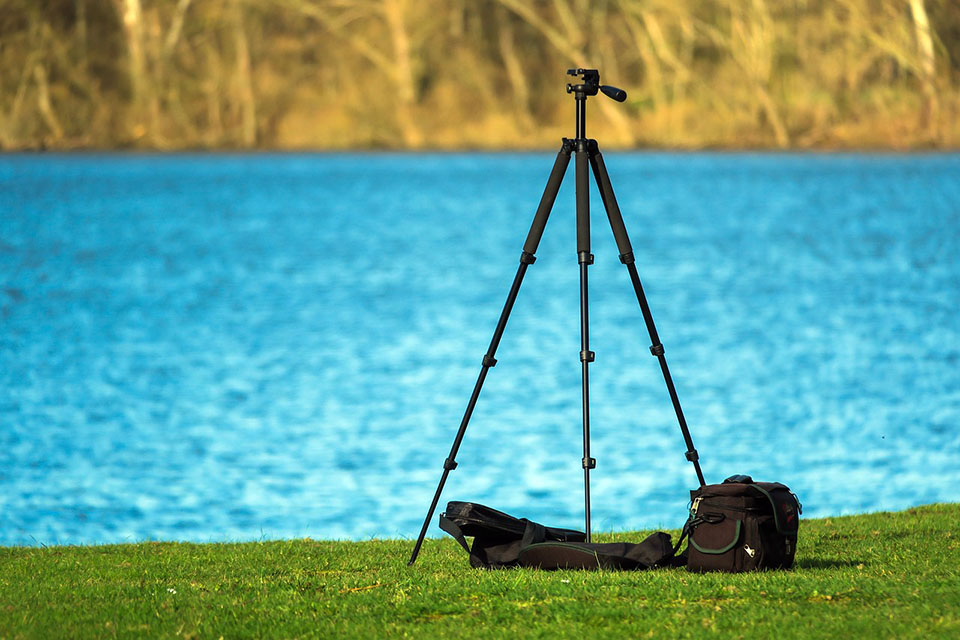
Plus, the ball head is incredibly smooth and precise, making it easy to get the shot that I want.
But don’t take my word for it. Let me share a little personal experience with you.
The Manfrotto Befree Advanced Twist Travel Tripod has four leg sections that twist to lock, which is not only easy to use but also provides stability to your camera. Speaking of stability, this tripod can hold up to 9 kilograms, which is quite impressive for a travel tripod.
Now, let’s talk about height. The Manfrotto Befree Advanced Twist Travel Tripod can reach a maximum height of 59 inches, which is more than enough for most people. As for the ball head performance, it’s smooth and reliable, allowing you to pan and tilt with ease.
Personally, I’ve had a great experience using this tripod. It’s lightweight, which makes it easy to carry around, and the legs lock in place securely. I’ve used it for both indoor and outdoor photography, and it has always provided the stability I need.
In terms of price, the Manfrotto Befree Advanced Twist Travel Tripod is in the mid-range, and there are other tripods on the market that offer similar specs for a similar price.
For instance, the Gitzo Series 1 Traveler is a bit pricier, but it’s also lighter and has a higher load capacity. On the other hand, the Benro Slim Carbon Fiber Travel Tripod is a bit cheaper and offers a similar load capacity, but it doesn’t reach the same height as the Manfrotto Befree Advanced Twist Travel Tripod.
Now, let’s talk about the bad stuff. Honestly, there’s not much to complain about here.
Some users might find the ball head is not that intuitive.
And if you’re used to handling heavier tripods, this one might feel a bit delicate. But overall, I think the pros far outweigh the cons.
2. K&F Concept 64”/162cm Tripod

Key Specs:
Leg sections: 4
Max Height: 72″
Min Height: 22″
Weight: 4.4 lb
Max payload: 22 lb
The good
+ Great value for money
+ Suitable for amateurs
+ Sturdy enough
The bad
– A bit heavy
Key takeaway
The K&F Concept Professional Camera Tripod is a fantastic option for photographers who need a flexible and sturdy tripod without breaking the bank. Just be prepared to carry it around with you.
Are you tired of lugging around a tripod that’s as heavy as a bag of rocks and as expensive as a new lens? Look no further than the K&F Concept 64”/162cm DSLR Tripod!
This tripod is a great affordable option that won’t break the bank but will still get the job done. It’s made of high-quality aluminum and can hold up to 22 lbs. of your precious camera equipment.
In addition, it can be adjusted to a height of up to 72 inches, perfect for all you giant photographers out there, and can also be lowered to as little as 22 inches for those ground-level shots.

The three adjustable leg angles also allow for some pretty creative shots, and the large 28mm ball head provides added stability when using a heavier camera setup.
From my personal experience, I can attest to its solid build and robustness, as it has held up my Canon M50 with an EF-M 18-150mm zoom lens without any wobbles or instability.
But, as with everything in life, there’s a catch. The K&F Concept tripod is a bit on the heavier side, weighing around 2kg/4.4lb.
So, if you’re planning on hiking or traveling with your equipment frequently, you might want to opt for a lighter option. But, if you’re looking for something sturdy and reliable, then this is the tripod for you.
In terms of competition, you have the Amazon Basics 60-Inch Lightweight Tripod and the Neewer Portable Aluminum Alloy Camera Tripod at the same price point. However, they have a lower weight capacity, which might not be suitable for those with heavier camera equipment.
3. SIRUI Traveler 7C Camera Tripod

Key Specs:
Leg sections: 4
Max Height: 65.5″
Min Height: 18.9″
Weight: 3.4 lb
Max payload: 17.6 lb
The good
+ Lightweight
+ Durable
+ Spike feet
The bad
– I experienced a little wobbling when its fully extended
Key takeaway
All in all, the Sirui Traveler 7C is a fantastic tripod that’s perfect for all you on-the-go photographers out there. Its lightweight design and easy-to-pack features make it a must-have for any traveler. Plus, its rubber feet can turn into spikes to grip the ground like a lion’s paw, making it ideal for shooting in sandy or snowy areas.
Next on our list is the lightweight and amazing Sirui Traveler 7C! Now, this baby is made with carbon fiber legs that are strong enough to hold your gear, but lightweight enough that you won’t break a sweat carrying it around.
Its weight capacity is a whopping 17.6 lbs, which means you can load it up with all your heavy camera gear and it won’t even flinch.
That’s right, the Sirui Traveler 7C is stronger than my resolve to not eat an entire tub of ice cream in one sitting.
The ball head on this tripod is as smooth as butter, making it easy to get the perfect angle for your shot.
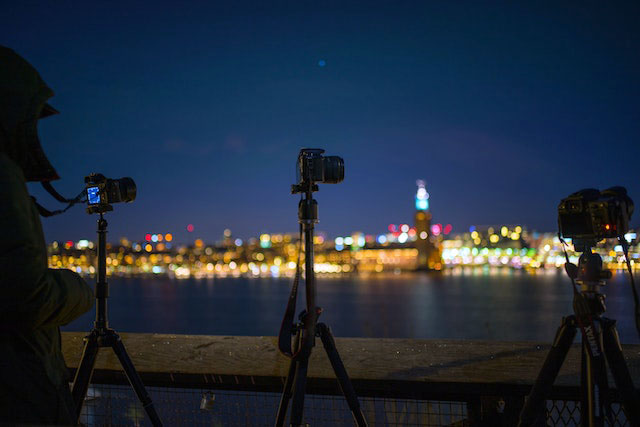
Plus, the plate is Arca Swiss compatible which is great for all you L-bracket users out there. PRESENT!!
This tripod is perfect for all your photography needs, whether you’re shooting in the mountains, on the beach, or in the city.
Now, let’s talk about the real game changer here – the rubber feet. You heard that right, the feet can be removed and replaced with spikes.
This is a fantastic feature if you plan on shooting on soft ground like snow or mud.
I personally love this feature because I like to travel to snowy areas and I always need that extra stability to keep my shots sharp.
The only downside to the Sirui Traveler 7C is that it can get a bit wobbly when fully extended.
But don’t worry, this is only an issue if you’re using a big and heavy DSLR and lens. If you’re using something like my Canon M50 you’ll be good to go.
Now, let’s compare this tripod to its competitors. The Manfrotto BeFree Advanced Travel Tripod and the MeFoto Classic CF Travel Tripod but the Sirui Traveler 7C has some advantages.
For one, it’s lighter than the Manfrotto and way cheaper than the MeFoto. Plus, it has the added bonus of rubber feet that can be switched out for spikes.
4. Amazon Basics 60″ Tripod

Key Specs:
Leg sections: 3
Max Height: 60″
Min Height: 23.8″
Weight: 3 lb
Max payload: 6.6 lb
The good
+ Lightweight
+ Cheap
The bad
– Durability
Key takeaway
The Amazon Basics 60″ Tripod is a decent option if you’re on a tight budget and just need something basic to hold your camera. But if you’re serious about your photography and need something more reliable, you might want to save up for a better option.
This time, it’s the Amazon Basics Tripod.
First, let’s start with the good news. The Amazon Basics 60″ Tripod is incredibly affordable, so if you’re on a tight budget, this might be the perfect option for you.
It’s got aluminum legs, which means it’s not as light as some of the more expensive tripods out there, but it’s not super heavy either. It’s got three leg sections and can extend up to 60 inches, which is pretty impressive for a budget option.
The load capacity is not too shabby either, at 6.6 pounds. So, if you’ve got a small camera setup, this tripod should be able to handle it without any problems.
But now, let’s get into the nitty-gritty of the 3-way head performance. Unfortunately, the 3-way head on the Amazon Basics Tripod isn’t the greatest. It’s not as smooth or as easy to adjust as some of the higher-end tripods out there.
However, if you’re not planning on doing any serious photography, the Amazon Basics Tripod might still be worth considering. It’s great for vloggers, YouTubers, or anyone who just needs a basic tripod for their camera.
But, as with all things in life, there are some downsides to the Amazon Basics Tripod. For one, the build quality isn’t the greatest. It feels a bit flimsy and not very sturdy. And as I said before, the basic 3-way is kinda limited.
5. MeFoto RoadTrip Classic CF Leather Edition Lightweight 61.6″ Carbon Fiber Tripod/Monopod

Key Specs:
Leg sections: 4
Max Height: 61.8″
Min Height: 15.4″
Weight: 3.2 lb
Max payload: 17.6 lb
The good
+ Lightweight
+ Looks amazing
+ Great durability
The bad
– Expensive
Key takeaway
If you’re looking for a travel tripod that’s both stylish and functional, the MeFoto RoadTrip Classic Leather Edition is definitely worth considering. Its ball head is top-notch, and it’s lightweight enough to take with you on your next adventure. Just be prepared to spend a good amount of money on it.
Key takeaway
This tripod has got style, it’s got grace, and it’s ready to hold your camera in place!
Let’s start with the specs. The MeFoto RoadTrip Classic Leather Edition has five leg sections, which is 1 leg more compared to a standard travel tripod. It also has a load capacity of 17.6 pounds, so you can feel confident that your camera and lens won’t go toppling over.
When it comes to height, this tripod can extend up to 61.6 inches when fully extended, which is pretty tall.
Now, let’s talk about the ball head. It’s smooth, it’s precise, and it’s easy to use. Plus, it has a bubble level built-in, which is super handy if you’re a stickler for getting your horizons straight.
Its Arca-Swiss style quick-release plate is also a nice touch because it allows you to quickly detach your camera from the tripod without having to fiddle with a bunch of screws and bolts.
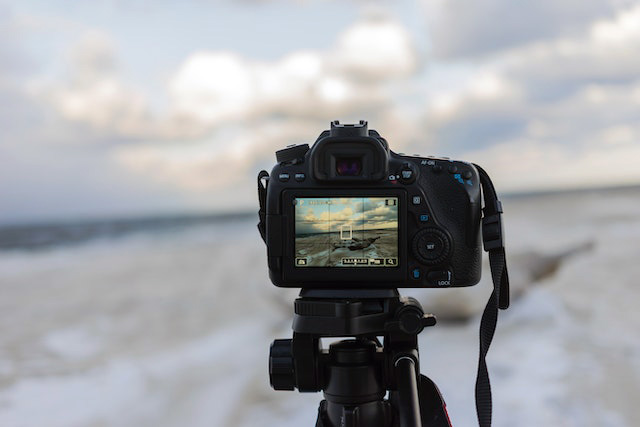
You can even detach one of its legs and use it as a monopod.
I’ve used this tripod on several occasions, and I’ve got to say, I’m pretty impressed. It’s lightweight and compact, which makes it perfect for travel. And the leather wrap around the legs? So fancy!
One downside I’ve noticed is that the twist locks on the legs can be a bit finicky. They don’t always lock into place on the first try, which can be frustrating when you’re trying to set up quickly.
When it comes to the competition, the MeFoto RoadTrip Classic Leather Edition is up against some pretty stiff competition.
The Sirui Traveler 7C, for example, is a fantastic option for those who want something lightweight and easy to carry around.
It’s even cheaper than the MeFoto, and its legs are made from carbon fiber, which is pretty cool.
6. Joby GorillaPod 3K Kit

Key Specs:
Leg sections: 1
Max Height 30 cm
Weight: 0.86 lb
Max payload: 6.6 lb
The good
+ Unique look
+ Ultra portable
+ Great for frequent travelers
The bad
– Not suitable for heavy camera/lens setups
Key takeaway
If you’re looking for a portable and versatile tripod, the Joby Gorillapod is definitely worth considering. Its bendy legs and ball head make it a joy to work with, and its lightweight design is perfect for taking on the go. It’s not tall but it is super flexible.
Oh, the Joby Gorillapod! It’s the perfect tripod for those of us who love to take our photography on the go.
With its bendy legs, you can set it up on pretty much any surface, whether it’s a tree branch, a fence, or even just the ground.
Let’s start with the good stuff. The Joby Gorillapod is incredibly versatile. Its legs can wrap around pretty much anything, which is great for getting that unique angle you’ve been looking for.
In addition, it can hold up to 6.6 lbs. It can hold our Canon M50 securely, and pretty much any camera with a medium lens combo.
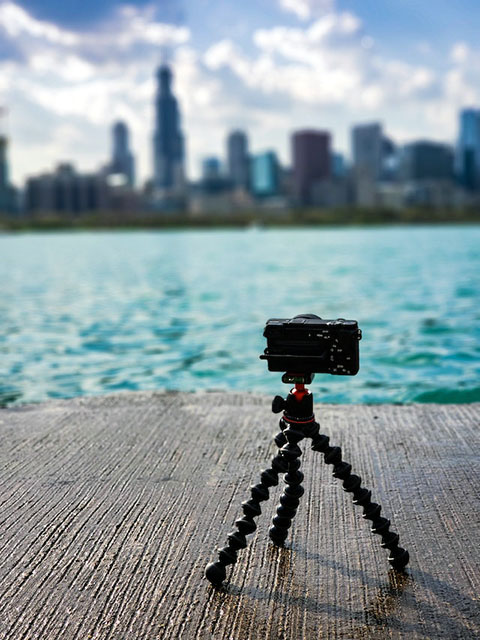
Now, let me share a personal experience. I took the Joby Gorillapod with me on a hiking trip and it was a game-changer.
I was able to set it up on big rocks, tree branches, and even on the ground. I was able to get some really unique shots that I wouldn’t have been able to get otherwise.
One of the things I really love about the Joby Gorillapod is its ball head. It’s smooth and easy to adjust, which is great for me. It is not removable though!
Plus, the quick-release plate is super handy, especially when you’re on the go.
Another great feature is its weight. It’s incredibly lightweight and easy to carry around, which is a huge bonus when you’re hiking or traveling.
Now, let’s talk about the not-so-great stuff. The Joby Gorillapod is definitely not as sturdy as a regular tripod. It can wobble a bit if you’re not careful, so you need to make sure you set it up on a stable surface.
Also, its height isn’t adjustable like a regular tripod, so you need to be aware of the height of your subject.
Things to Consider when Choosing a Tripod
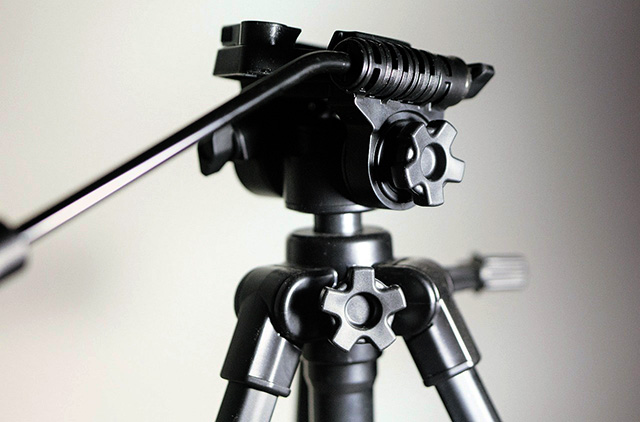
Choosing the right tripod for your Canon M50 mirrorless camera can seem daunting, but fear not! Here are some things to consider to help you make the right choice:
Budget
First, you have to consider your budget. There is a wide range of tripods on the market with different features and price points. Determine what features are most important to you and what you’re willing to spend.
Load Capacity
The Canon M50 is a relatively lightweight camera, but you still need to make sure the tripod can support its weight. Look for a tripod with a load capacity that exceeds the weight of your camera and any lenses you plan to use.
Height
Consider the height you need for your shooting style. If you’re tall, you might want a tripod that can extend to your eye level without having to hunch over. Conversely, if you’re shooting low angles or macro photography, you might want a tripod that can go really low to the ground.
Leg Sections
More leg sections allow for greater flexibility when it comes to adjusting the height of the tripod. However, more sections can also mean a little more time spent setting up and packing down.
Weight
If you’re planning on taking your tripod with you on the go, make sure you choose a lightweight option that won’t weigh you down.
Ball Head Performance
A good ball head is essential for getting smooth panning and tilting shots. Look for a ball head that is easy to adjust, stays secure once locked in place, and supports the weight of your camera and lenses.
Personal Experience
Consider your own shooting style and preferences. Have you used a tripod before? Do you have any particular needs or requirements for your photography?
FAQ
Which tripod is best for beginners?
The best tripod for beginners should be easy to use and set up but still offer performance and stability that professional photographers can appreciate. Look for a lightweight model with an adjustable height. The K&F Concept 64”/162cm Tripod is a great choice for beginners. It’s lightweight and easy to carry around, yet it also offers a stable platform for your camera and lens.
Is an expensive tripod worth it?
If you’re looking for a tripod that will last, then yes. Expensive tripods feature higher-quality materials and construction, and they often include more advanced features such as quick-release plates and ball heads. They may also have a wider range of useful features like multiple bubble levels, spike feet, etc.
When should you not use a tripod?
You should not use a tripod when you need to move quickly and fluidly. Tripods are heavy and cumbersome, so they can slow you down. Also, if the winds are so strong, it is not recommended to use a tripod. The strong winds can cause your tripod to move around and potentially fall over.
Do I need a tripod for night photography?
A tripod is not necessary for night photography. However, if you are planning on taking long exposures of several minutes or more, it is highly recommended that you use a tripod so that your camera does not move during the exposure. Tripods are also useful when shooting in low light conditions where shutter speeds are slow and very susceptible to movement.
Should I turn off image stabilization when using a tripod?
Yes! Many cameras have a feature called “image stabilization” which helps to reduce camera shake. This is great for handheld photography but not when using a tripod. If you have image stabilization turned on, it will try to compensate for movement by moving the sensor around inside the camera body or lens. This can result in blurred images.
What are the advantages of a carbon fiber tripod over a traditional aluminum one?
Carbon fiber tripods are lighter and more durable than traditional aluminum models. This is particularly important if you want to travel light with your camera gear, or if you’re shooting lightweight DSLRs and mirrorless cameras (such as Canon M50 and M50 Mark II).
